
This is the European paper wasp, Polistes dominula. It looks a lot like a yellowjacket, but with a narrower body and longer legs that dangle below when it flies. Another distinguishing feature is its antennae: they are mostly orange, in contrast to the all-black antennae of yellowjackets.
As you can guess by the name, the European paper wasp is not native to the U.S. It was accidentally introduced to the East Coast in 1978, and it has since invaded the West Coast as well. It has flourished in this country, outcompeting native paper wasp species.
In my garden, I see the European species every day during the growing season, while I have never seen a native paper wasp. Rather than asking “Can we get along?”, therefore, the better question may be “Should we get along?” Should we tolerate these invaders when they may displace our native species? Because they prey upon many insects that are themselves considered invasive pests, some would argue that they may as well stay. In any case, they are too numerous to eliminate now.
One way that European paper wasps outcompete native species is by getting a jump on the season. Overwintering queens emerge from dormancy before other species. They can be spotted in the Portland area in early March if the weather’s mild. Females start looking for a place to build their nest at that time, preferring sheltered spaces like porches, eaves, sheds, and birdhouses. They fight over the choicest spots.

I caught these two brawling on the rafters of our patio.
Despite their cantankerousness, up to four females, known as foundresses, may agree to build a nest together. Eventually, one dominant individual will emerge as the queen and only she will lay eggs. The other foundresses will help build the nest and raise the offspring.
Unlike yellowjackets, which nest in the ground, paper wasp nests are suspended aboveground, and unlike hornet nests, which are enclosed in a papery covering, paper wasp nests are exposed and are comprised of just a single layer of cells.
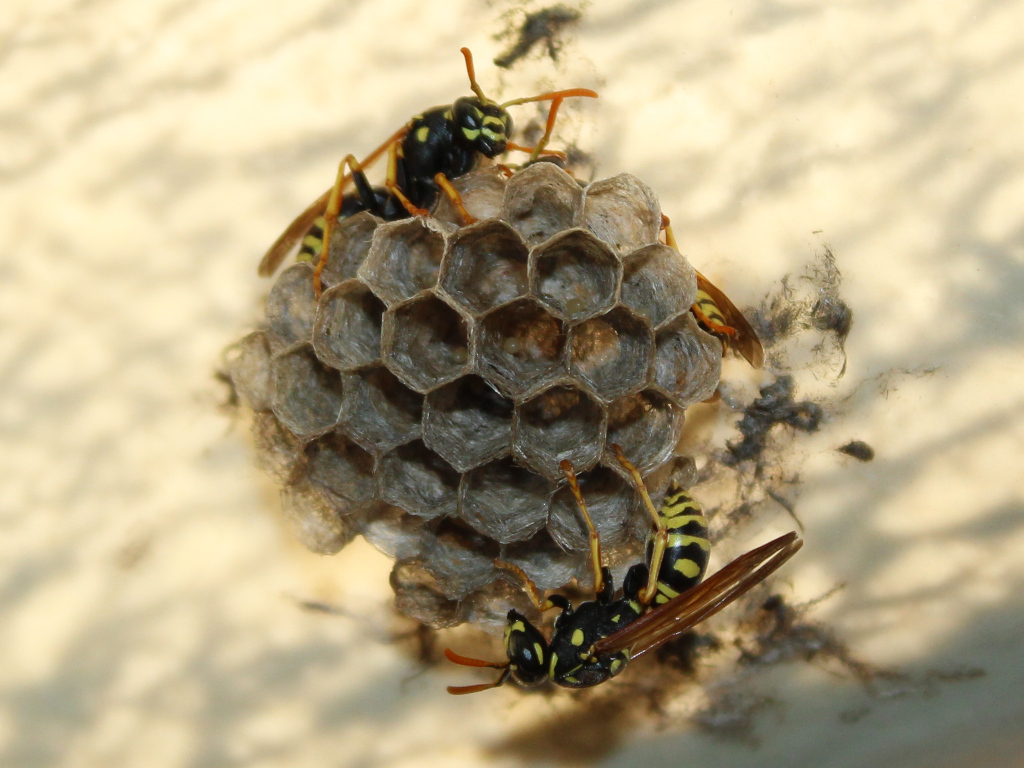
The queen lays one egg in each cell, which you may be able to see in this photo. Each new wasp will complete its development inside its cell, progressing from egg to larva to pupa to adult. European paper wasps mature faster than native paper wasps, another factor in their success here. Only females are produced at first, and they will become workers.
Worker wasps construct the nest from wood fibers, which they collect with their mandibles. Weathered wood from manmade structures is a popular source.
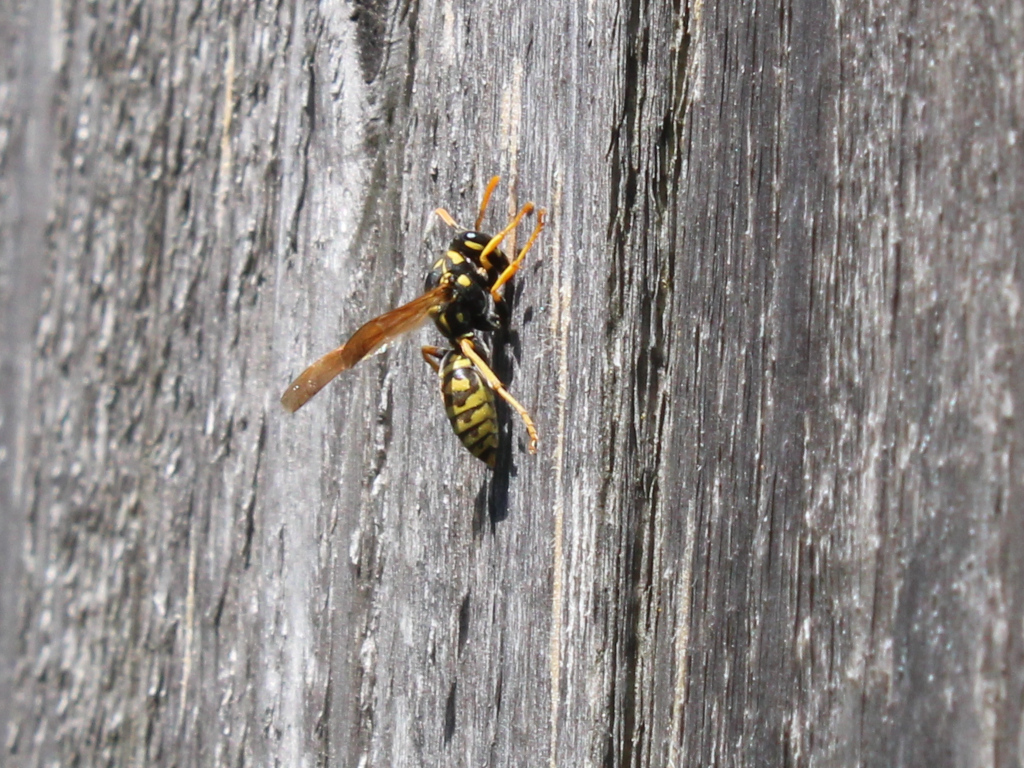
Here, a paper wasp chews off fibers from my cedar fence.
First, though, she must collect water, which she’ll store in her crop to mix with the chewed-up wood fibers to make a pulp. When building their nests, paper wasps regularly visit this water dish I put out for the birds.
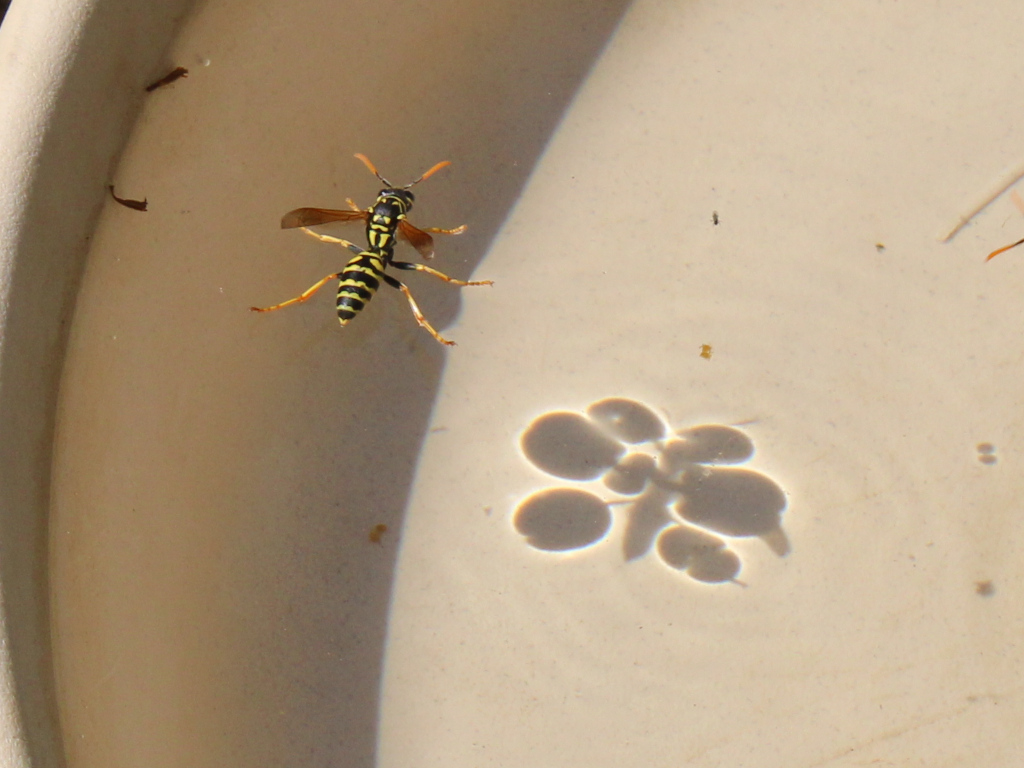
On hot days, they seem to really enjoy this part. I’ll find them floating idly like vacationers at a hotel pool.
By the way, you’re often advised to put out a shallow dish of water for the bees, with some gravel in the bottom so they don’t drown. Don’t bother. Bees get all the water they need from the nectar they drink. You’ll only get paper wasps. Birds, however, will appreciate a proper birdbath.
Worker wasps hunt insects to feed the offspring. Many paper wasps specialize in hunting caterpillars, but European paper wasps feed on a variety of insects; this adaptability is yet another factor in their success. They do relish caterpillars as well.
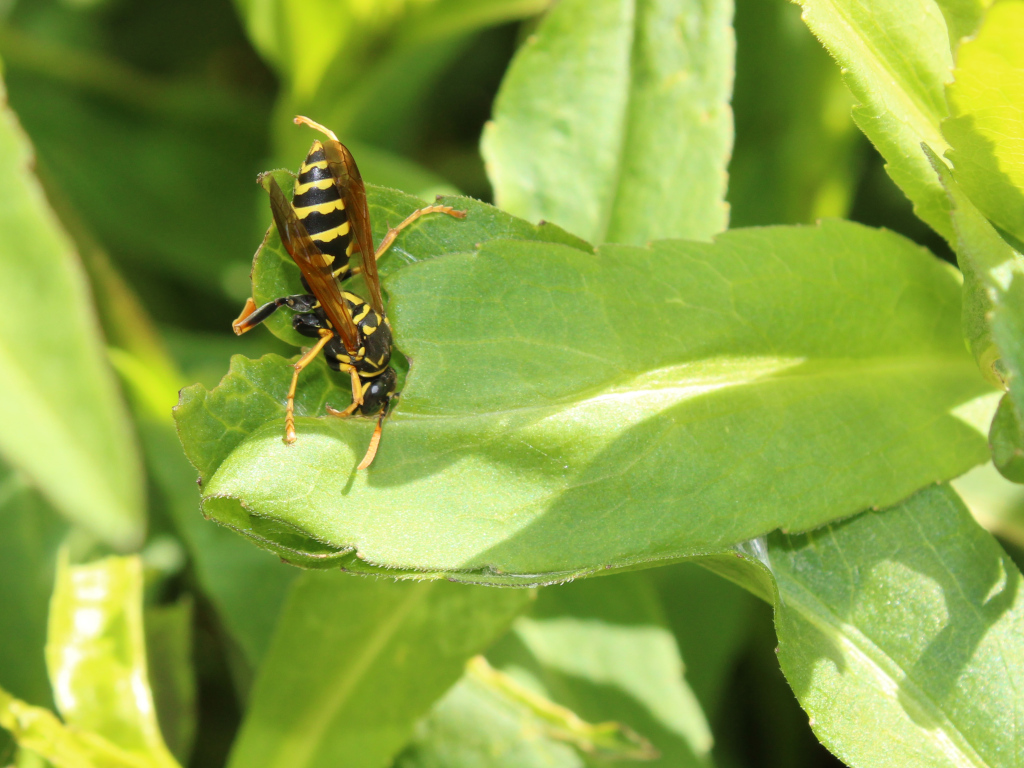
Here, a worker is patrolling in my garden. Many caterpillars will hide from predators in a folded leaf, but this wasp is wise to the trick. She investigates one end of a folded Douglas aster leaf but can’t break in.
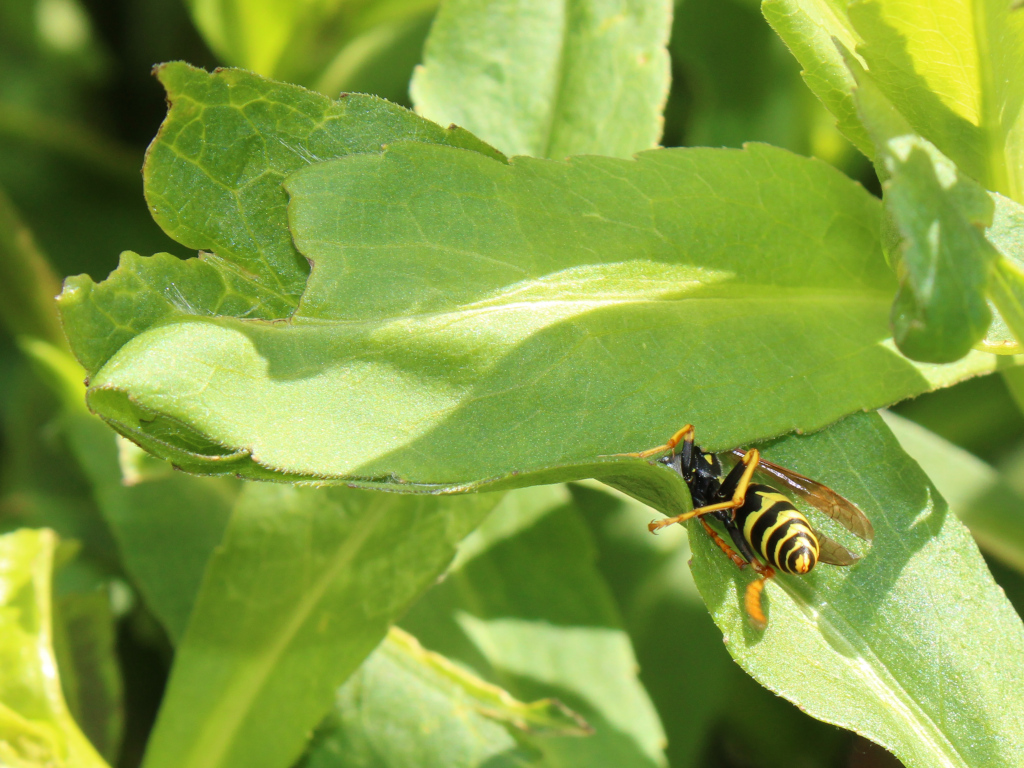
She goes around to the other end and pokes her head in. Hello, anybody home?

She goes in further, her long legs stretched out behind her.

She dives in all the way, and then…

Success!

She doesn’t sting her prey like some other wasps, but starts chewing it up right away.
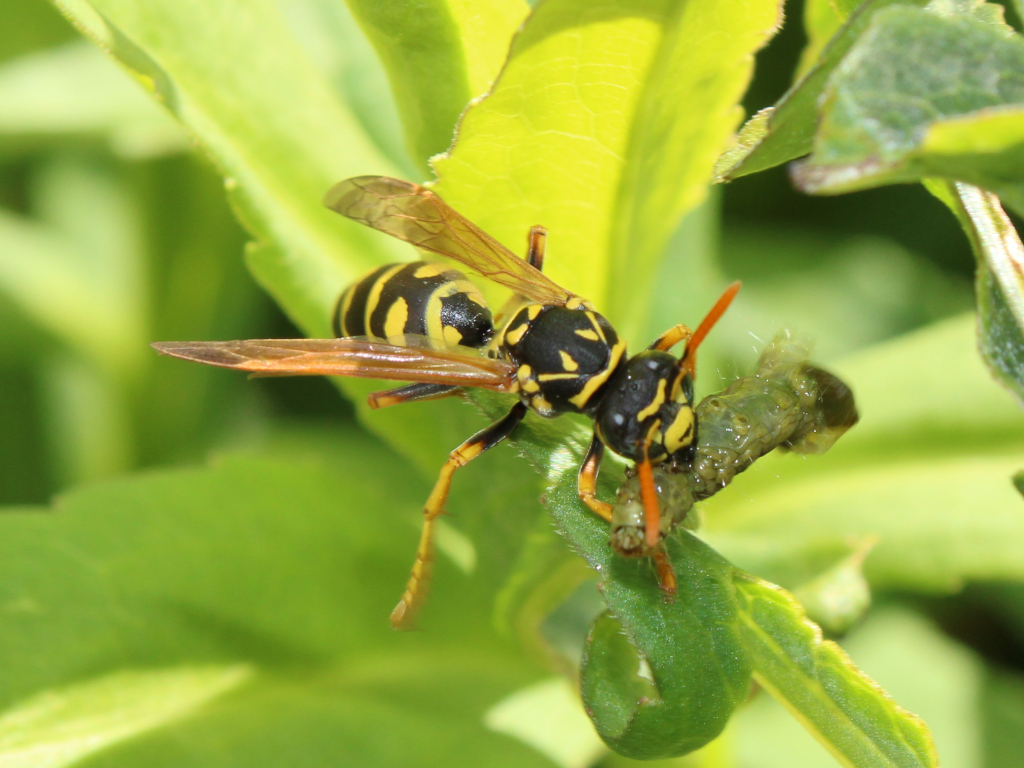
Back at the nest, she’ll regurgitate some of the unfortunate insect to feed to the youngest larvae. The older ones will get some larger, chewed-up pieces.

She may also ingest a little of the caterpillar goo to nourish herself.
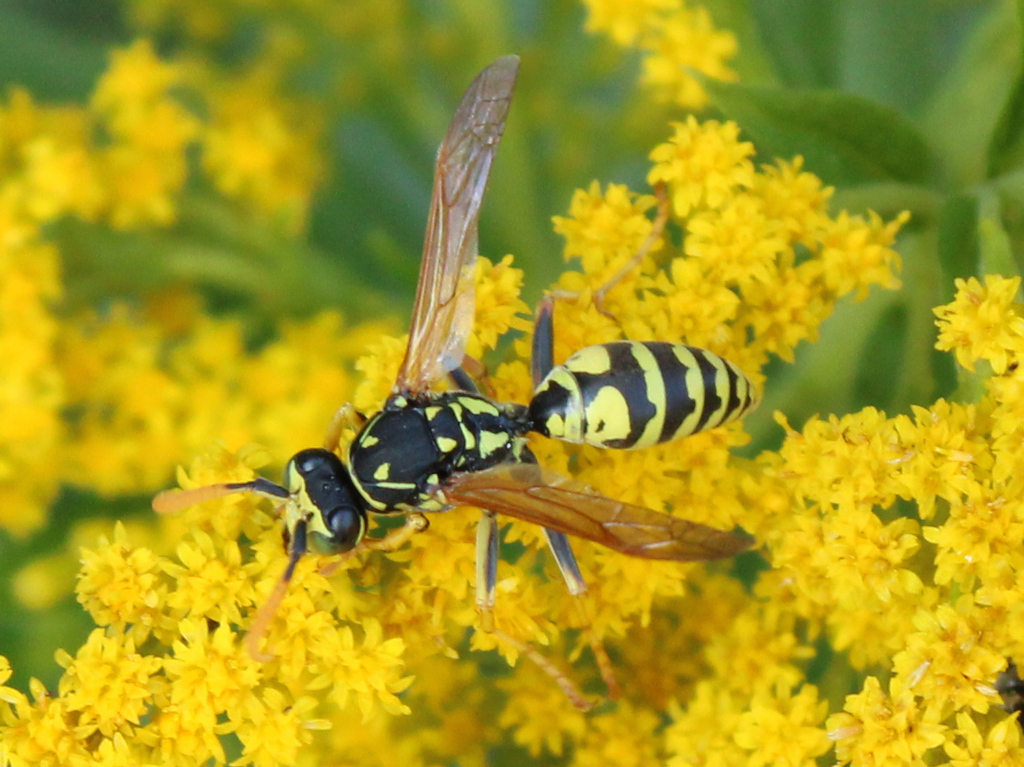
Adults also feed on nectar and can be seen on many different flowers, like this goldenrod. This is a male. You can tell by his solid yellow face and the way his antennae are hooked on the ends. Male paper wasps, by the way, like all male wasps and bees, have no stinger and are completely harmless. Males are produced later in the season, along with females that will become next year’s foundresses. They mate, and everyone except the new foundresses will die. These survivors will seek out a sheltered place and will overwinter there in a state of torpor.
In fall, the nest is abandoned. That’s when I took my nests down. I’ve read that European paper wasps will reuse an old nest, and I didn’t want the two small nests to become two huge nests. Plus, I just wanted to have them to admire.

They really are an amazing feat of engineering.
I know people who have been stung by paper wasps, and apparently it is quite painful—more painful than a yellowjacket sting. But fortunately, paper wasps are much less aggressive than yellowjackets. In my experience, they were well-mannered guests. I passed within a few feet of their nests many times and was never harassed in any way. So, yes, humans and paper wasps can live in peace together.
Should I continue to tolerate the European paper wasps in my garden, though, given their invasive tendencies? That question was answered for me the next year in an unexpected way. In early spring, two nests were constructed in exactly the same spots where the previous ones had hung. I decided to let them be, but in early June they were destroyed.
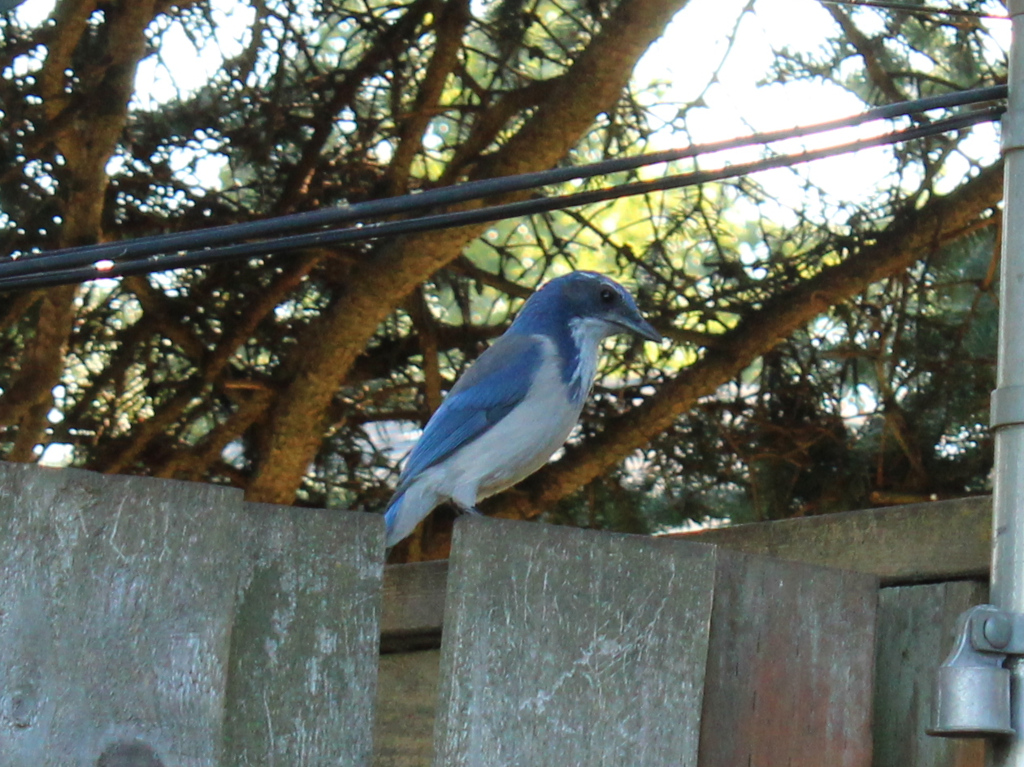
A scrub jay swooped in, pecked them down, and made a meal of the contents. As loud and obnoxious as the jays are, squawking and screeching all summer, it was nice to see a native resident have the final word.

